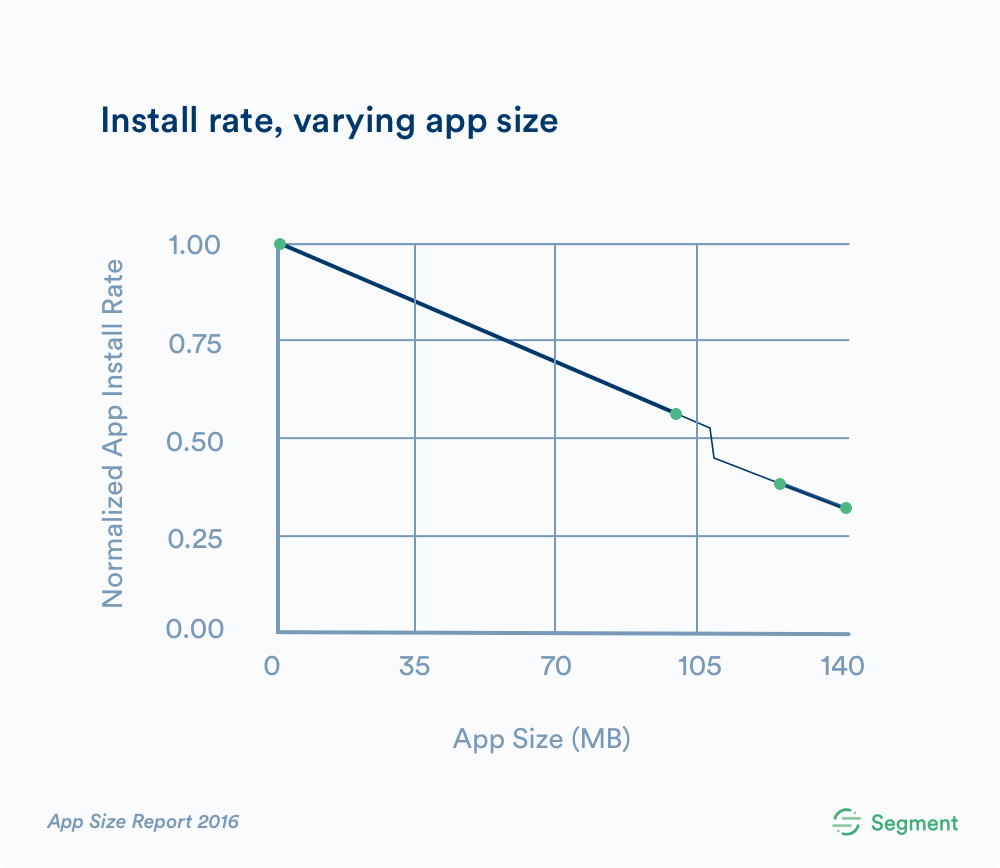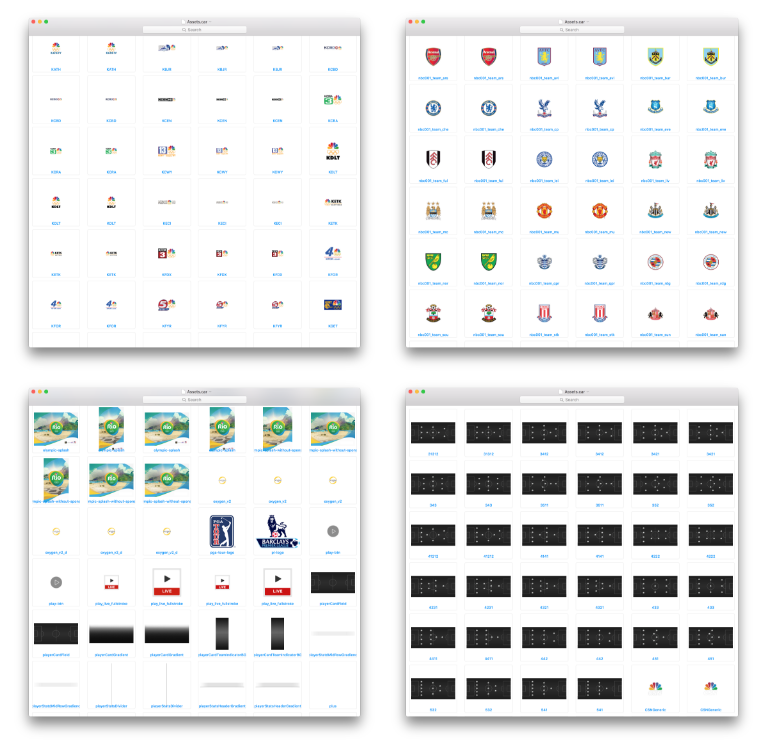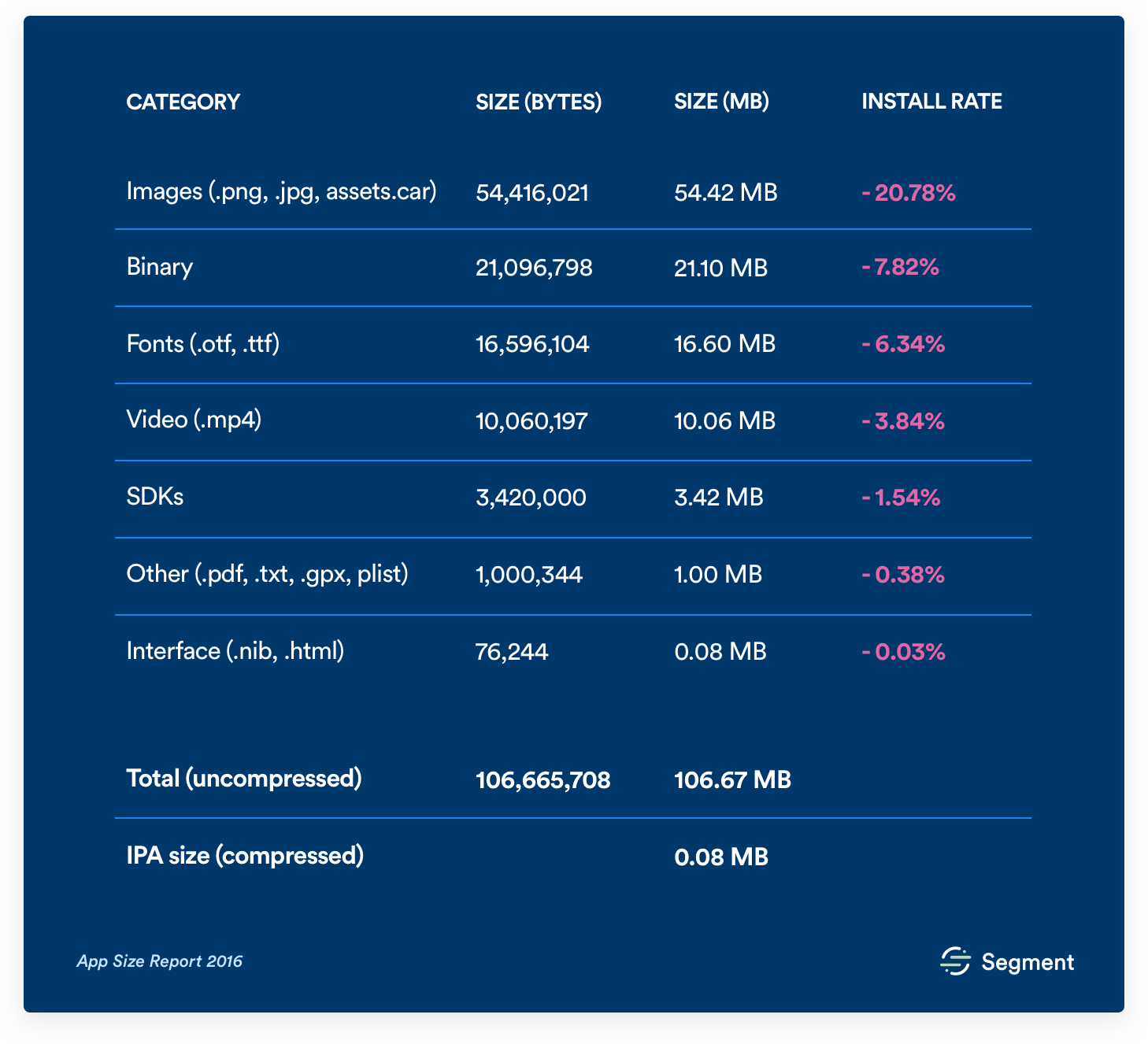Effect of Mobile App Size on Downloads
A few months ago we were at a conference in Half Moon Bay talking with a general manager at a large mobile company, and he said, “One of my projects for the next six months is to reduce SDK bloat in all our apps.” Six months is a substantial investment! So we asked why this mattered so much to him.
He gave three reasons:
They’re up against the 100MB app size cellular download limit, and they need to find ways to reduce the size of their app so that they don’t take a hit on installs.
Occasionally their SDK vendors have bugs that crash their app, giving them bad reviews and lowering installs.
Often their SDK vendors are unprepared for major iOS version upgrades, blocking key releases and big announcements.
While it makes intuitive sense that a large app download size would demotivate people and reduce installs, we wanted to dig deeper into these reasons and really assess the quantitative impact. Are we sure app size reduces installs? How big is the effect?
So, over the last few months we’ve done some extensive research into these issues… and in this article we’re going to share some new experimental results on how app size affects install rate.
To measure the impact of increased app size, we needed to buy a small app, with no active marketing activities but significant steady downloads. Then we needed to increase the app’s size, leaving everything else constant, and observe the impact on app install rate. To the best of our abilities, this would simulate the impact of SDK bloat, or anything else that just makes an app bulky.
So, we bought the Mortgage Calculator Free iOS app through some friends in the YC Founders network. It was a minuscule 3MB, had a steady pattern of organic installs (~50 installs per day for several years), and had no active marketing activities.

Then, without making any additional changes, we bloated the app from 3MB to 99MB, 123 MB and then finally 150MB, observing the isolated impact on install rate with each change in app size. In the real world, app sizes can increase substantially with the addition of seemingly simple things, like an SDK, an explainer video, a bunch of fonts, or a beautiful background picture for your loading screen. For the purposes of our experiment, we just bloated the app with a ton of hidden album art from our engineering team’s favorite artist.
To quantitatively measure the impact of each successive bloating, we looked at data provided directly by Apple in iTunes Analytics; specifically conversion from “Product Page Views” to “App Units” (or colloquially “installs”/”install rate”).
With the larger app sizes, we saw substantial losses in product page to app install rate. In particular, there was a substantial drop around the cellular download limit (~100MB), above which Apple does not let users download the app over 3G or 4G. (Note: the conversion rate can be greater than 100% due to installs direct from search results that skip product page view.)

From these results we estimate a linear decrease in install conversion rate below the cellular download limit from 3–99MB at 0.45% per MB. Above the cellular download limit we estimate a linear decrease in install rate of 0.32% per MB. To our best estimate, the gap between the two lines is covered by a 10% instantaneous install rate drop across the cellular download limit. (Although Apple says the cellular download limit is 100MB, we found in practice that a 101MB IPA did not trigger the cellular download block… the actual limit was somewhere between 101MB and 123MB and varied depending on the exact build.)

Increasing the size of our app from 3MB to 99MB reduced installs by 43%, and the increase to 150MB reduced installs by 66% in total. For mobile companies striving for growth, an increase in app size is extremely costly.How to destroy an app
In an attempt to be proper growth scientists, we tried to replicate the experiment by returning the app to its original 3MB size (plus other intermediate sizes) and re-measuring the install rate. Unfortunately, as a result of our earlier bloating, the app attracted several critical ratings and reviews, which stick around forever:

In our measurements, the app’s growth appears to be semi-permanently damaged and we only saw a minor rebound to 59% install conversion rate for the 16 days the 3MB version was available. (As a side note you can see these customers cite 140MB and 181MB as the download sizes… the true download size varies depending on the customer’s device and OS version.)
As an example, we randomly chose to inspect the NBC Sports app that’s been popular and featured on the App Store during the Olympic games. The app is 90.5MB in total. By the far the biggest part of app’s size is images, accounting for 51% of the entire app’s size, with code (23%), fonts (16%) and video (9%) accounting for most of the rest.
Images were both in the raw app package and in the asset catalog (hidden away inside assets.car). There are huge numbers of local station & team logos, startup screens, and soccer field layouts.


Within the “code” category (which is a single encrypted file) are around a dozen different SDKs, a handful of which we could detect and estimate for size contribution. SDKs contributed roughly 3.5MB to the total app size, with an estimated impact of -1.54% install rate.
Overall, there’s an incredible amount of low-hanging fruit in optimizing an app’s size. One particularly honorable mention is the (presumably accidental) inclusion of the Adobe VideoHeartbeat SDK docs (955 kb) in the production IPA package downloaded through iTunes.

While most SDKs are small individually, the net impact of installing many SDKs in your app is a significant increase to the app’s size, and therefore a meaningful negative impact on install rate, not to mention engineering time & maintenance. SDK vendors can be unprepared for new iOS releases, which can block key releases and announcements. Or, SDKs can occasionally introduce bugs, and even a single crash can mean a would-be user will never use your app again.
Therefore, it makes sense to limit the number of SDKs you bundle into your app in order to optimize for performance. But you still need to make sure you’re tracking and collecting key lifecycle events. Segment built an easy, lightweight solution called the Native Mobile Spec. The Native Mobile Spec automatically collects events that allow you measure top mobile metrics without any tracking code.
Now that we conclusively know how to destroy an app, we also know how to improve one. Here are a few key steps that you can take to make sure your app is ready for holiday season:
Use a mobile app size calculator to find out the exact size of your app.
Review our guide for getting your app ready for launch, for a complete set of tips and advice on how to make your app great.
Read about how Segment can help mobile teams.
A version of this blog post originally appeared on Recode.

Our annual look at how attitudes, preferences, and experiences with personalization have evolved over the past year.